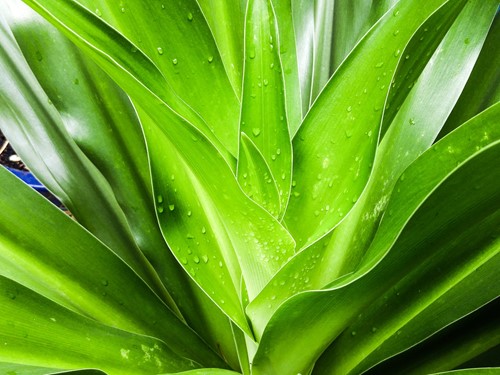
Few homeowners enjoy the idea of adding another thing to the list of chores. When cleaning and maintaining entire indoor and outdoor spaces, the thought of cleaning your houseplants seems tedious and unnecessary. However, regular cleaning of plant foliage is crucial to keeping them healthy and at their best.
The reasons for cleaning your houseplants’ leaves are twofold: health and aesthetics. Plants feed themselves through photosynthesis or turning sunlight into energy. They absorb sunlight through their leaves. Therefore, dirt, dust and other residue can make this process more difficult. If your plants are photosynthesizing efficiently, they will stay healthy and have lower risk of pest or fungal problems.
Cleaning your plants also makes them present a lot better, too. Restoring a plant’s foliage to its natural glossy shine will make it appear more alive than ever. Even plants without smooth textures benefit from cleaning—fuzzy and matte foliage will keep its natural color and vibrancy when not covered in dust.
While some products on the market claim to be an easy fix for “leaf shine,” the best thing to use is plain water. Here are some methods you can use to clean your plants:
Wipe the leaves carefully with a damp cloth. Soft fabrics like shop rags and shammies are great but you can also use the same washcloths you use yourself.
Some plants love a shower as much as humans do. Simply place them in the shower or bathtub and give them a gentle rinse with room temperature water. Make sure the water pressure is low enough that it won’t cause damage.
You can clean more delicate foliage with a spray bottle. Many plants thrive with the humidity from regular misting, but it’s also a great way to keep the leaves clean.
If your tap water has high mineral content, use distilled water or rainwater if possible. This will keep some of the more sensitive plants happy and avoid creating more residue while trying to remove it.
Much like the rest of your house, how often your plants need cleaning will depend on several factors. There is no set schedule to follow for every plant. To keep them clean and healthy, inspect and touch the leaves to check for dust. You can use a feather duster or dry rag to remove dust in between deeper cleanings if you wish.
If your plants have sticky grime that won’t come off with a gentle wipe, it’s perfectly safe to mix in a bit of diluted dish soap. Most experts suggest using 1/4 teaspoon of soap per quart of water in order to keep the solution gentle. Rinse thoroughly, as soap can leave traces of its own and dry out plant leaves if not properly removed.
The more houseplants you have, the more work they become. However, creating good plant cleaning habits will benefit you in the long run by helping your plants stay healthy, beautiful and pest free. It will also help remove dusty allergens from the home and improve your overall air quality. Clean your plants regularly and everybody will breathe more easily.

Kim Clark started her real estate career in 1999 and shortly thereafter obtained her Broker’s license in 2002. After working for larger, corporate offices, she realized that her business and clients needed a more personalized and flexible firm. She founded Bayside Realty Consultants in 2007 offering a space of unity, collaboration and encouragement for agents and their clients. Kim specializes in the unique Cape Cod market comprised of primary, vacation and investment properties.
She says "It is great to be a part of helping make a homeowner's dreams come true". Clients and their individual needs can make things very exciting! Kimberly's enthusiasm is contagious and it has been a real asset in her successful career. She says, "Never quit. Just do what you like and the rest just falls into place." She is certified in several real estate designations including GRI, CBR, CRS, e-Certified, and a certified trainer.